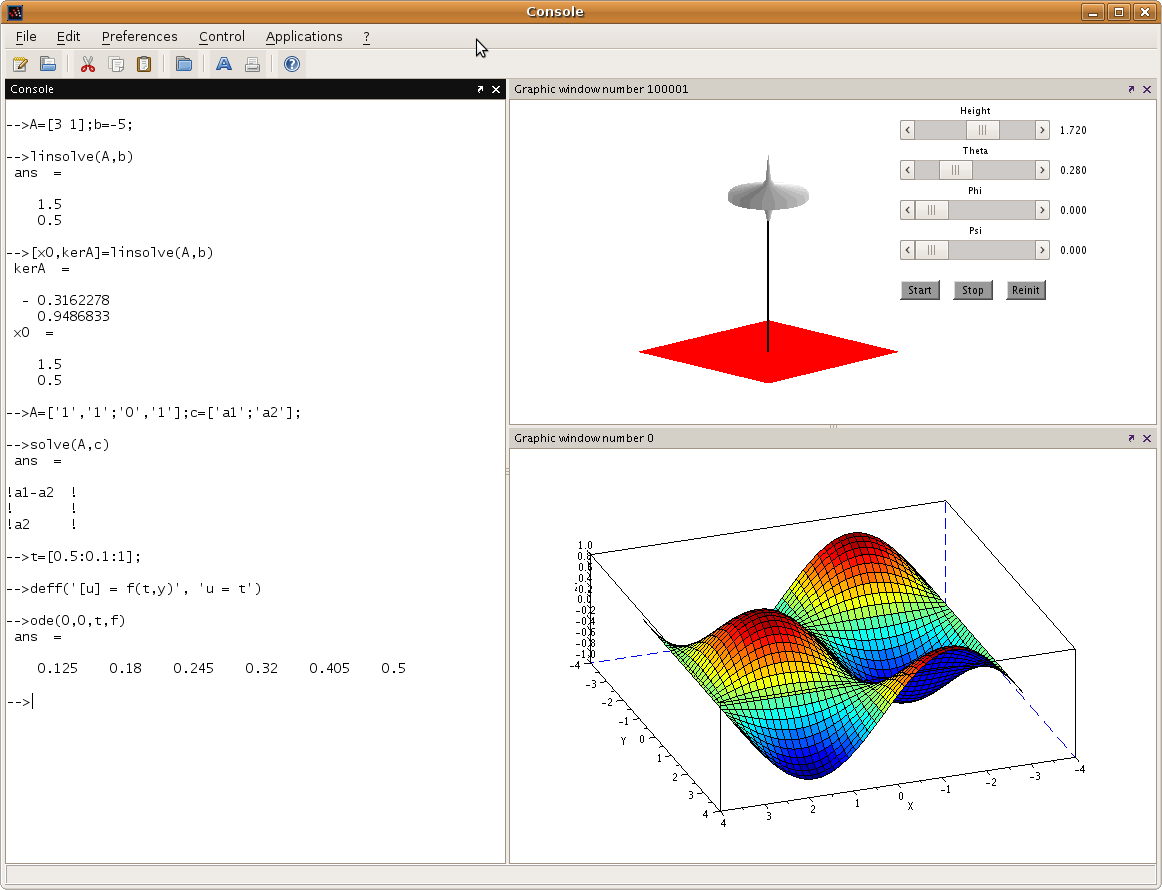

Before running the system we need to configure the simulation.įrom this parameters simulation time can be set. Now what will this system do is that, state space block takes the input coming from the step function and determines the variable dots and integrates them and generates outputs as variables we want to determine and send to the scope block. Since I will apply 0 force until first second and after that constant 1 Newton force no need to change any parameter in this block. In this block, Step Time determines the time when output of this block jumps from Initial Value to Final Value. When we double click on this block a window will pop up which is

For this simulation since we have two variable which are displacement and velocity I have initialize them as 0.Īfter that we will use step input block to give force input to the system. In this window, we will write variable names defined in Variable Browser initially. When double clicked on this block a window will open as shown in Figure. Now open the CLSS in Xcos and type variable names All the variables defined in the Variable Browser can be used in Xcos with same name. They can be set up by typing in Scilab Console and they will appear in Variable Browser. In order to do this initially we need A, B, C, D matrices defined in the Scilab Workspace. Cscope block draws a 2-D plot and input determines the y axis and the red input is the time input and it determines the x axis of this plot.įirstly, I will set up the state-space system and simulate it. Since we need input for the simulation we will use this block for continuous force generation. Step function block is used for generating step input at a specified simulation time. In the Palette Browser they can be found from They are called Step Input and Scope blocks and in Xcos they are named as STEP_FUNCTION, CSCOPE. Third block and Fourth blocks are commonly used blocks in simulations. For drawing purposes we will need this block. This block continuously gives time of the simulation as output. Second block is called Clock and in Xcos Palette Browser it is named as CLOCK_c. In our case, the input will be Force and the output will be displacement. This block takes the system inputs and outputs the system outpus.

When I use this block, I will explain how we are gonna do it. We need to provide A, B, C, D matrices, which are obtained from the mathematical model itself, to this block from the workspace of the Scilab. Firstly the state space block which is named in Xcos Palette as CLSS open the Palette and check for continuous time systems Now I will talk about the Xcos blocks that we will use for simulation. When we apply Newton's second law of motion to the Figure From the Newton's second law of motion it can be derived as Governing equation of the system is a second order ordinary differential equation. This system is a very common problem to solve. Firstly, I will derive the state space model of mass-damper-spring system. In this tutorial, I will be talking about simulating state space model of mass-damper-spring system with the powerful toolbox Xcos. In the first tutorial, I have briefly explained the usage of Xcos for a control system design and its benefits.
#Scilab simulation how to
You will learn how to model and simulate dynamic system by Xcos.


 0 kommentar(er)
0 kommentar(er)
